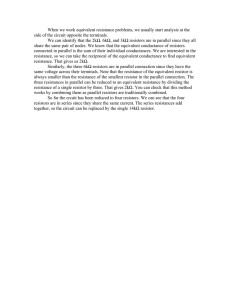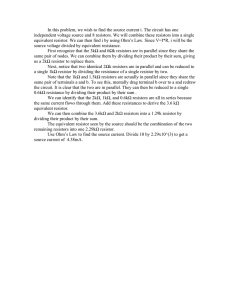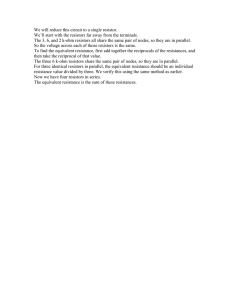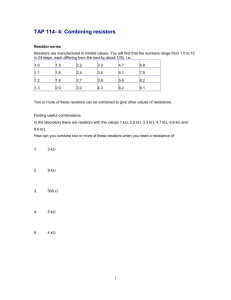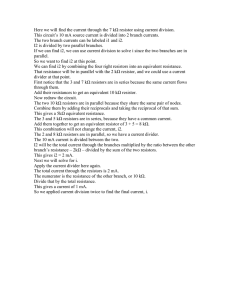In this problem, we will calculate the equivalent resistance at... We begin by noting that the two 4kΩ resistors in...
advertisement
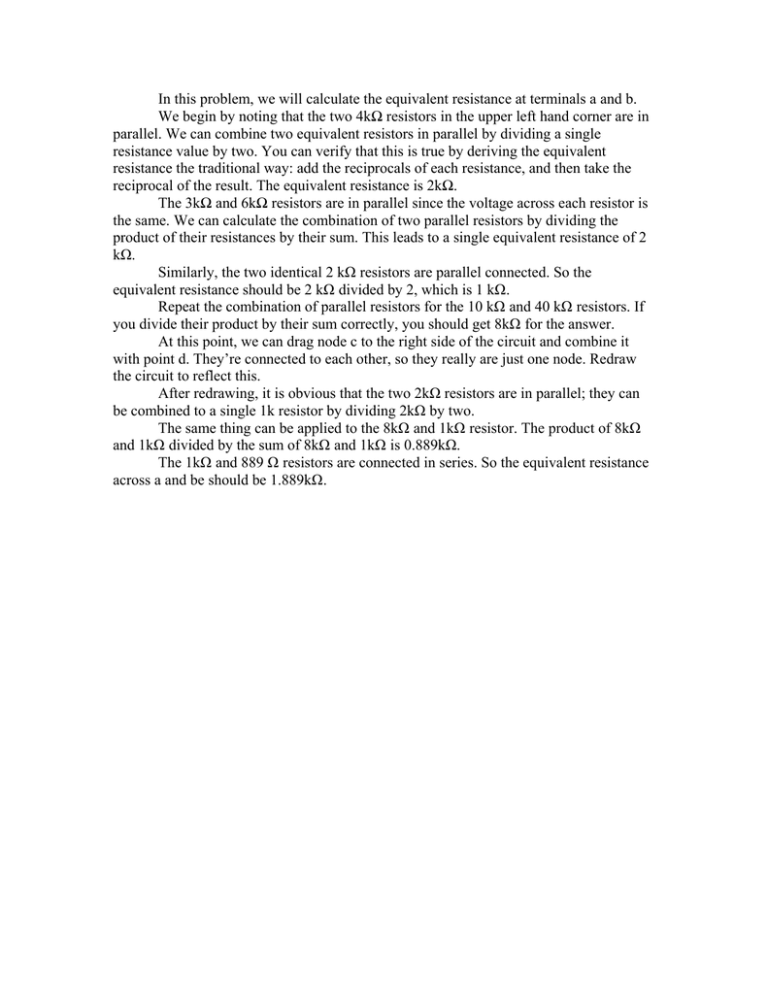
In this problem, we will calculate the equivalent resistance at terminals a and b. We begin by noting that the two 4kΩ resistors in the upper left hand corner are in parallel. We can combine two equivalent resistors in parallel by dividing a single resistance value by two. You can verify that this is true by deriving the equivalent resistance the traditional way: add the reciprocals of each resistance, and then take the reciprocal of the result. The equivalent resistance is 2kΩ. The 3kΩ and 6kΩ resistors are in parallel since the voltage across each resistor is the same. We can calculate the combination of two parallel resistors by dividing the product of their resistances by their sum. This leads to a single equivalent resistance of 2 kΩ. Similarly, the two identical 2 kΩ resistors are parallel connected. So the equivalent resistance should be 2 kΩ divided by 2, which is 1 kΩ. Repeat the combination of parallel resistors for the 10 kΩ and 40 kΩ resistors. If you divide their product by their sum correctly, you should get 8kΩ for the answer. At this point, we can drag node c to the right side of the circuit and combine it with point d. They’re connected to each other, so they really are just one node. Redraw the circuit to reflect this. After redrawing, it is obvious that the two 2kΩ resistors are in parallel; they can be combined to a single 1k resistor by dividing 2kΩ by two. The same thing can be applied to the 8kΩ and 1kΩ resistor. The product of 8kΩ and 1kΩ divided by the sum of 8kΩ and 1kΩ is 0.889kΩ. The 1kΩ and 889 Ω resistors are connected in series. So the equivalent resistance across a and be should be 1.889kΩ.
